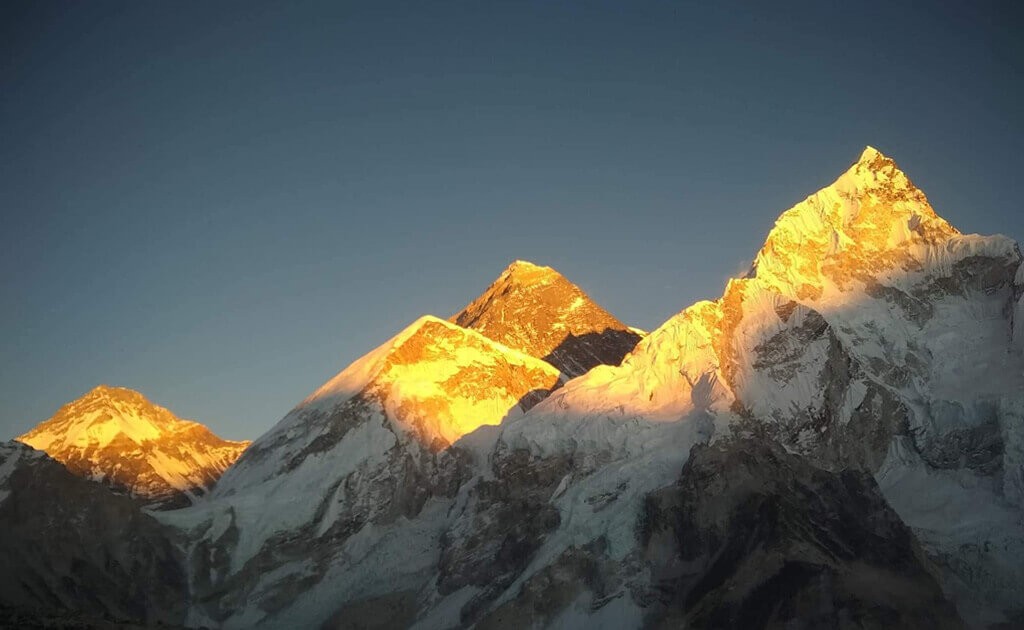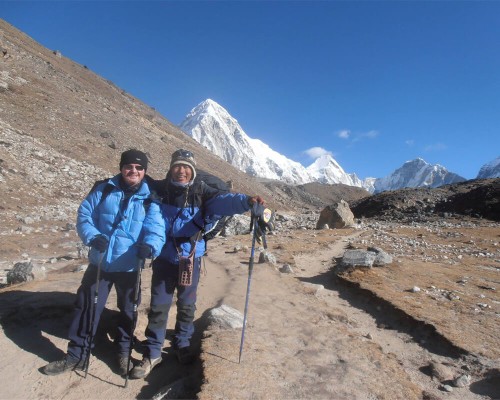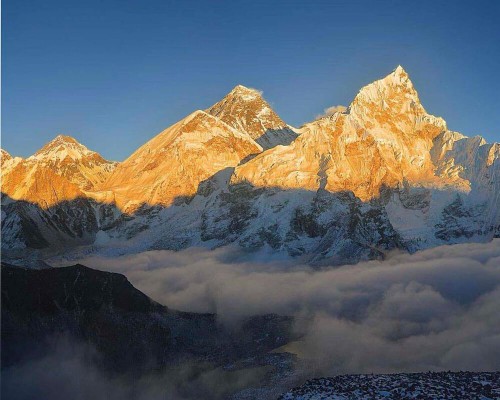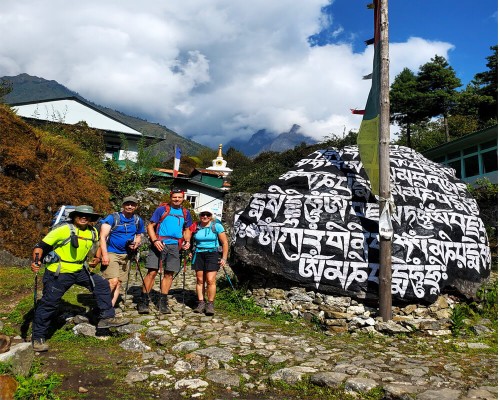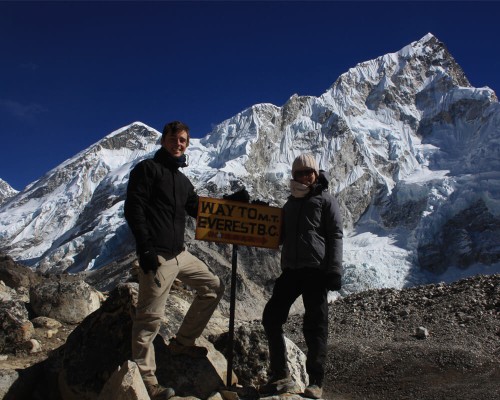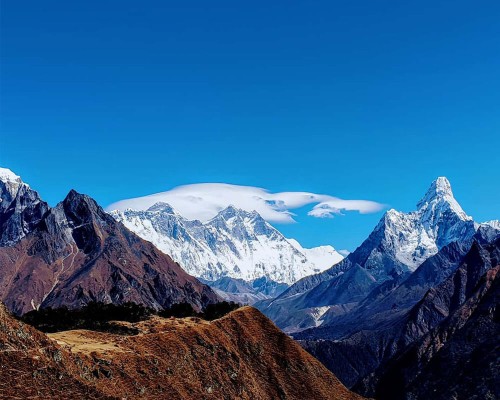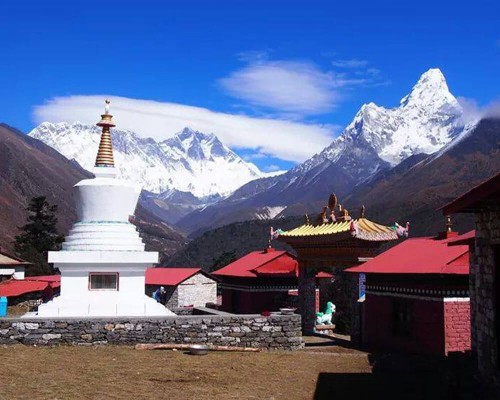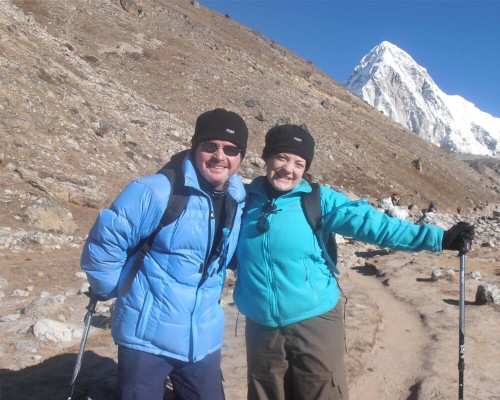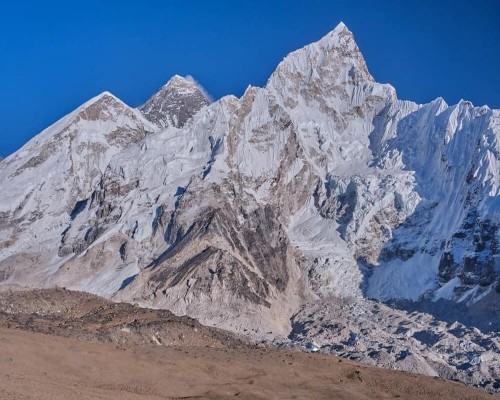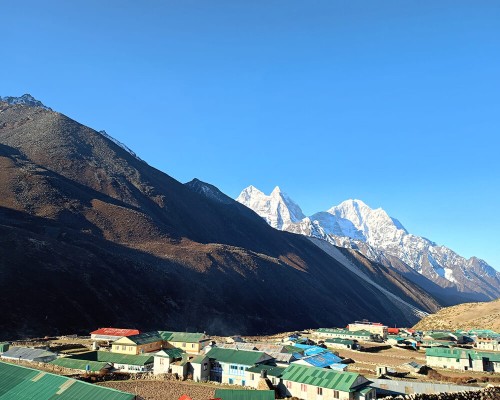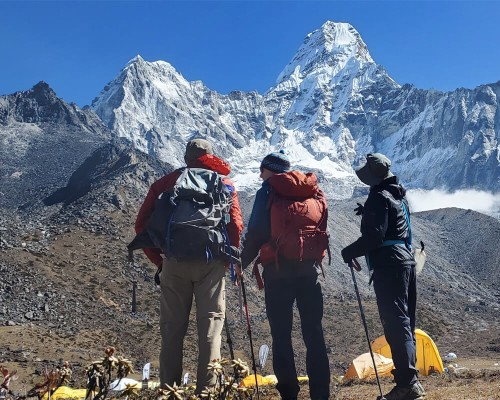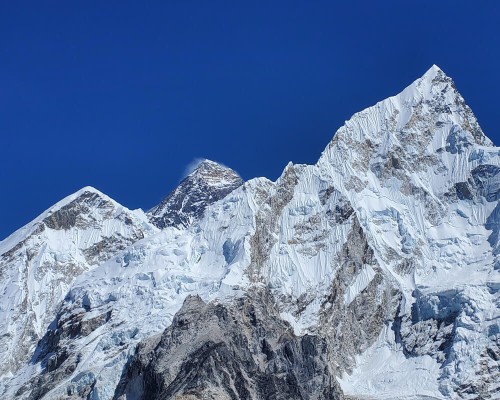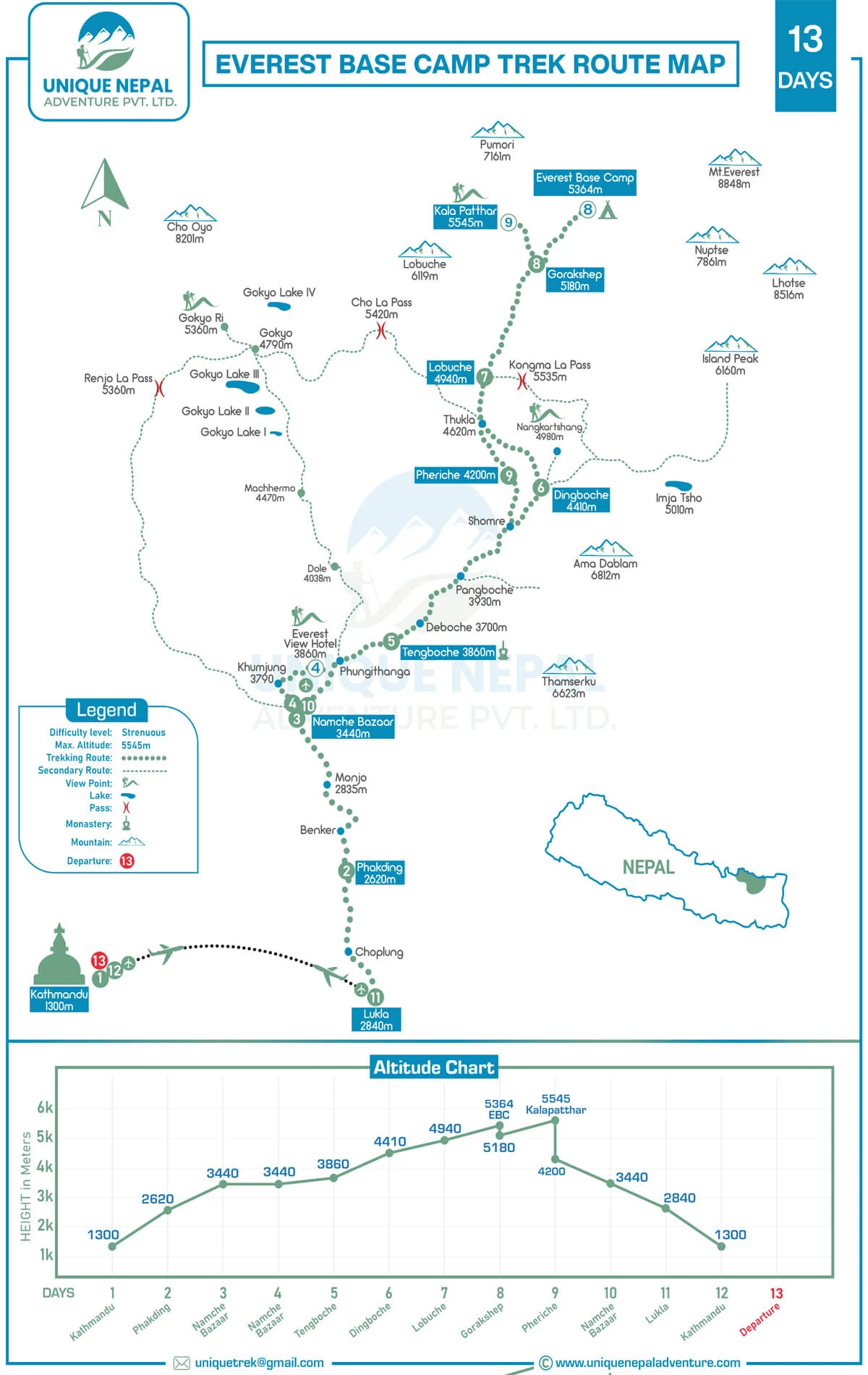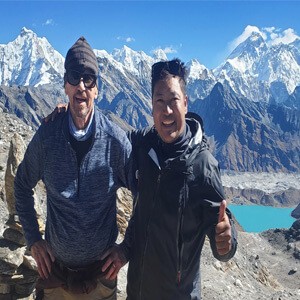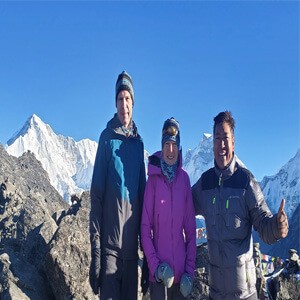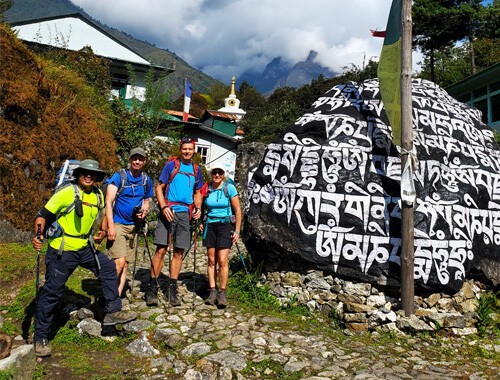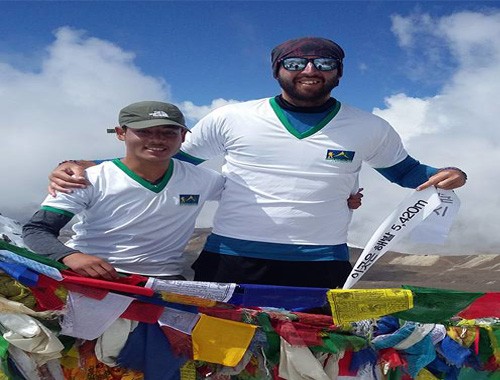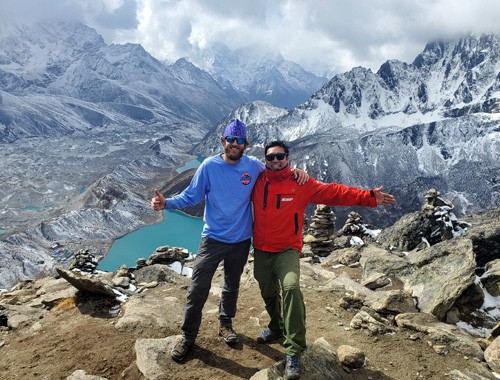Overview of Everest Base Camp Trek
The Everest Base Camp Trek is the most popular trekking destination in Nepal because it takes you to the base camp of the world’s highest mountain. You’ll get a close view of Mount Everest, which stands at 8,848 meters, and experience the lifestyle, culture, and religion of the Sherpa people who live in the high-altitude valley. The Sherpas are Buddhists, and you’ll see many Buddhist monuments along the way, including monasteries, stupas, mani walls, prayer wheels, and prayer flags. The trek is located in the eastern part of Nepal, near the border with Tibet.
Mt. Everest is well known in the Nepali language as Sagarmatha, where "Sagar" means the bottom of sea level and "Matha" means the top of the head, which means sea level to top. It is the world’s highest mountain, and in the Tibetan language, it is called Chomolungma, or Holy Mountain. It looks like a black rock, but it is the world’s highest and most gloriously charming peak; it is (8848 m/29029ft) above sea level.
Reaching the base camp of the world’s highest peak (5,364 meters / 17,599 feet), witnessing the closest and most awe-inspiring view of Mount Everest (8,848 meters / 29,029 feet) from the highest vantage point at Kalapatthar (5,545 meters / 18,192 feet), and spending the night at the highest settlement in Gorakshep (5,160 meters / 16,930 feet) offers an unparalleled adventure. The Everest Base Camp Trek provides extraordinary vistas of snow-capped mountains, captivating natural beauty, and an immersive experience of the unique Sherpa culture. Embark on this extraordinary journey with us, and create an unforgettable trip filled with adventure and lasting memories.
Everest Base Camp is situated in the Solukhumbu District, east of Nepal. Most of the people are Sherpas, and a few others are Rai and Tamang people. We explore their lifestyle, culture, religion, etc. They live in a community village, and they are beneficial to each other.
Sherpa people are very rich in culture and have their own traditions. They speak their own native languages, dress themselves up, and celebrate many kinds of festivals. Especially, they celebrate their own Happy New Year called "Gyalbo Lhosar." They are so helpful; they stay in the community village and help each other. They love their own typical and traditional culture. Likewise, they married according to their own traditions. The trekking route has many community villages along Lukla, Phakding, Monjo, Namche, Khunde, Khumjung, Pangboche, and Thame Thamo. They have pets and wild animals such as Sheep, Goats, Mountain goats, snow leopards, red pandas, some birds, etc.
Every camp has a well-managed tea house that facilitates lodges; they provide organic and hygienic meals and comfortable rooms with warm hospitality. It is an open valley with less vegetation, but they do some farming and produce some crops and organic vegetables.
Everest Base Camp Trekking Routes: It starts with landing at Kathmandu International Airport and staying overnight at the Standard Hotel in Kathmandu. The next day, early in the morning, fly to Lukla from Kathmandu for only 35 minutes, and same day, trek to Phakding village. Day one: easy walking, not ascending and descending much but a little bit is compulsory on the Nepal trail.
Day two arrives at the capital city of Khumbu Valley, or Sherpa Villages, called "NAMCHE BAZAAR." It is a beautiful place; they have many lodges. They have trekking shops, mountain bakeries, banks, ATMs, etc.
We recommend "Acclimatization Day" on day 3, but you must do a few hours of a day excursion. Special purpose of acclimatization and excellent views. Our guide will take you to Khumjung Khunde village to explore Hillary School, Hospital, and Yeti Skull in Khumjung Monastery, or directly take you to Everest View Hotel to watch the incredible view of Mt. Everest at 8848m, Amadablam, Thamserku, and many more.
Then, return to Namche Bazaar, take lunch, get refreshed, and enjoy a yummy mountain bakery café. Namche Bazaar is a really nice place to stay for a couple of days, to adjust altitude.
Then, your trek will continue through many beautiful villages. The next day, you will arrive at Tengboche, which is a huge historical monastery. You get a chance to visit the monastery early in the morning and in the evening during the monk ceremony time. You can visit and explore it, even if you can sit in the corner to meditate for a while. You will see an incredible panoramic view of Mt. Everest and Amadablam, Thamserku, Lhotse, Nupsesaar, Taboche Peak, etc.
The next day, trekking to Dingboche is an easy trail that slopes gently upward. Our 13-day itinerary doesn't have an acclimatization day here, but if you plan 14 14-day Everest Base Trek off course, we can put here one rest day in Dingboche (4410 m), let us know. We can customize your trip to include an extra day. We recommend you hike to an adventure-altitude hill called Nakarshyang Top (4980m). It makes it easy to succeed in the Everest Base Camp and the adventure Kalapatthar journey.
The Everest Base Camp Trek is continuing to reach the final destination of the highest mountain base camp. You will arrive at Lobuche is a wonderful walk through an open valley with so many white, snow-capped mountain views.
You will see many statues of those who died on the Everest expedition on the way before getting to Lobuche. Then, you get to the base of the world's highest mountain, Everest Base Camp (5364m).
First, you will arrive at Gorakshep lodges, which is the last camp at the highest altitude (5160m). Check in and have lunch, then visit Everest Base Camp same day. Prepare well, drinking water, some bars, warm clothing, and especially a windbreaker. It takes 2 hours going and 1 hour back, almost 3 hours round trip. Back to Gorakshep and stay adventure night, but well-managed lodge. Do not worry, be confident, and have nice and warm meals.
Today's morning is the most important; you should get up early in the morning. Then, ascend approximately 385m, which takes almost two hours, and call it the KALAPATTHAR viewpoint (5545 m/18192 ft). It is an extremely tough ascent with an absolutely incredible view of Mt. Everest (8848 m/29029 ft). It looks like a "BLACK rock," but it is such a glorious view standing with the 4th highest mountain, Lhotse, at 8516 m, and Nupse. You can spend 15–20 minutes watching views and take a lot of pictures with your team in your own style; it will be a lifetime of unforgettable memories. You will see many white, snow-capped mountains.
Then return to the lodge, take breakfast, and pack your luggage. You will feel so easy to come downtown along Lobuche village, Thugla, Pheriche, Pangboche, Tengboche, Namche, Phakding, and Lukla. It's really easy; jumping down takes only 3 days to arrive in Lukla. Then I fly back to Kathmandu. Our program is a perfect 13-day itinerary; if you like one more or fewer days of the Everest base camp trek, feel free; we will customize your trip itinerary accordingly.
How much 13-day Everest Base Camp Trek cost?
A 13-day Everest Base Camp Trek is US$1195 per person for a full-board package from your arrival to departure. We serve you, from Kathmandu airport pickup to drops, and the Standard Hotel in Kathmandu with continental breakfast and full board services of the trekking package. But, you need a minimum of two people in a group; if you are single cost will be a bit more.
Option: If you book your own Kathmandu hotel, the 10-night 11-day Everest Base Camp Trek cost is US$1150 per person, which excludes the Hotel in Kathmandu. Which services would you like? Arrival to departure full board package or excludes Kathmandu hotel? Let us know, and we will arrange it accordingly.
We can make a 14-day Everest Base Camp Trek as well, which itinerary is two places resting, one is normally in Namche, and another in Dingboche. If you like it, the price is 1250$ per person for a full board package. We need a minimum of 2 people in a group.
Lifestyle, Their Culture, Customs, and Religion in the Everest Region
Most people live as Sherpas, alongside a few Rai and Tamang communities. The Sherpa people are profoundly rich in their culture and traditions. They possess their own language, distinctive attire, customs, and festivals, and are deeply devoted to Buddhism. Their heritage is reflected in numerous historical landmarks, both ancient and modern, including monasteries, Mani walls, chortens, prayer wheels, pagodas, and more. Furthermore, they observe a variety of festivals, with particular emphasis on their own New Year celebration, 'Gyalbo Lhosar.' There is also a noticeable influence from Tibetan culture.
The Most Attractions and Eye-Catching Mountain Views From Everest Base Camp Routes
There are many crystal-clear white snow peaks. You will see a different angle and different views every day. The mountain's heights range from 6000m to 8848m. You can enjoy its scenic views.
- Mt. Everest (8848m / 29029ft)
- Mt. Lhotse (8516m / 27940ft)
- Mt. Makalu (8463m / 27766ft)
- Mt. Amadablam (6812m /22350ft)
- Peak: 38 (7590m / 24902ft)
- Mt. Pumori (7161m / 23495ft)
- Mt. Nupse (7861m / 25791ft)
- Mt Thamserku (6608m / 21680ft)
- Island Peak (6160m / 20210ft)
- Taboche Peak (6495m / 21310ft)
- Lobuche Peak (6119m / 20076ft)
Wildlife, Flora, and Fauna in the Everest Region Trek
The Everest region lies in Sagarmatha National Park. They are preserving wildlife. We can see some wild animals and birds on the way.
Yaks, Himalayan Thar, Blue Sheep, Deer, Musk Deer, Monkey, Red Panda, Snow Leopard, Wild Boar, Bear, and Many Kinds of Birds as National Birds, Danfe, Lophophores, Kalij, etc.
Rivers, Lakes, and Glaciers in the Everest Base Camp Trek
Most of the trekking route follows the Dudh Koshi River side because the river follows the Khumbu Glacier. There are some lakes, such as Imjatse Lake and Gokyo Lakes, but you can’t see them if you trek straight to Everest base camp. You will see some small ponds in the Khumbu glacier. You will see Khumbu Ice Falls and milky rivers from glacier water.
Do we need any permits for the Everest Base Camp Trek?
Yes, you must issue some permits to visit Everest Base Camp. It lies in Sagarmatha National Park. You must issue some of the entry permits below. If you don't issue permits, they won't allow you to visit Everest Base Camp. There are many checkpoints. The National Park Service, the Army, and the Police will check it. But don't worry; we are here, we will help to issue it, and our guide will arrange everything for the trek. In the end, he will give it to you as a gift.
- Sagarmatha National Park Entry Fees: - Nrs. 3000/-
- Khumbu Pasang Lhamu Rural Municipality, Nrs. 2000/-
- TIMS (Trekking Information Management System) - Nrs. 2000/-
When is the best time to visit Everest Base Camp?
The best time to visit Everest base camp is in the autumn (late September, October, November, and early December) and in the spring (March, April, and May). Those months are always clear, with a good temperature, good visibility, and fantastic, crystal-clear mountain views. The winter and monsoon seasons are also not bad. In winter, it is snowing and very freezing cold, and in the monsoon, it is most of the time raining and cloudy, and there is no clear visibility. If you like to trek in the monsoon or winter, it is possible. We arranged it safely and successfully.
- Autumn Season: September, October, November, and December.
- Winter Season: late December, January, and February
- Spring Season: March, April, and May
- Monsoon Season: June, July, and August.
Is a Helicopter Tour to Everest Base Camp Possible?
Yes, a helicopter tour to Everest Base Camp is absolutely possible—and a fantastic option if you're short on time. You’ll fly over the majestic Himalayas, land briefly at Everest Base Camp (5364m), and enjoy close-up views of Mt. Everest (8848m) and other stunning snow-capped peaks.
The tour takes about 3.5 to 4 hours in total. You’ll also stop at Hotel Everest View or Kongde Resort for breakfast with panoramic mountain views.
The helicopter seats up to 5 people, and we organize everything smoothly and safely.
If you prefer some trekking but can’t complete the full route, there’s another option: trek to Everest Base Camp over 6–7 days, then fly back to Kathmandu by helicopter. This combo gives you the best of both experiences—an adventurous walk and a scenic flight.
Whether you want a full helicopter tour or a trek-and-fly return, we’re here to make it happen with ease and care.
Why Book With Us?
At Team Unique Nepal Adventure (UNA), we're passionate about delivering authentic, safe, and personalized trekking experiences in the Himalayas. Here's why trekkers choose us:
- Fast & Friendly Communication: We respond quickly via email, WhatsApp, or your favorite social platform—always ready to assist.
- Your Safety Comes First: Your safety, comfort, and success are our top priorities—every step of the way.
- Expert, Licensed Guides: Our guides are government-certified and trained in first aid and high-altitude safety. They're dedicated, kind, informative, and always ready to assist—ensuring you’re well-briefed, supported during challenges, and left with unforgettable memories.
- Strong & Supportive Porters: Our porters are friendly, experienced, and physically fit, making your trek smoother and more enjoyable.
- No Hidden Costs: We believe in transparency. Our pricing is clear—what you see is what you pay.
- Tailored Itineraries: From short getaways to extended adventures, we customize each trek based on your travel time and fitness level.

